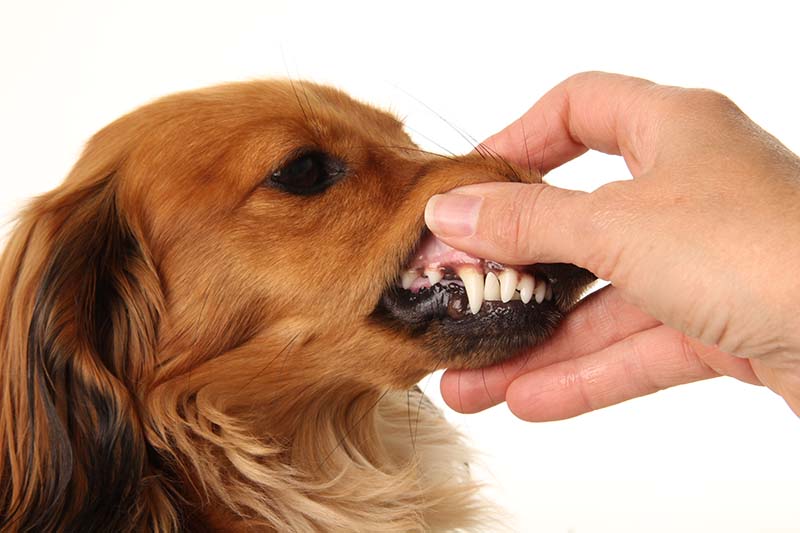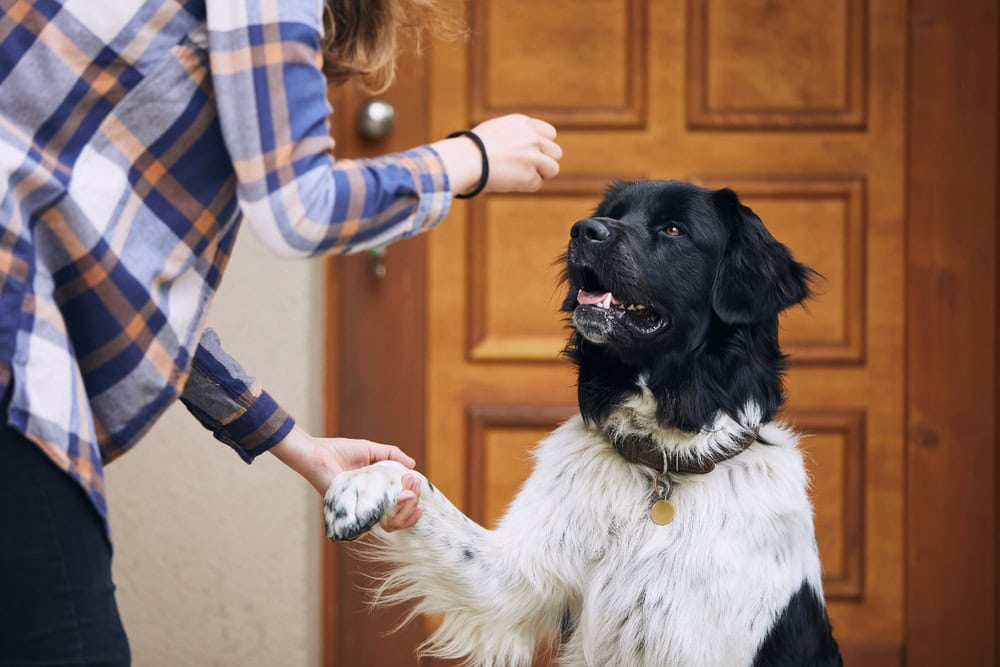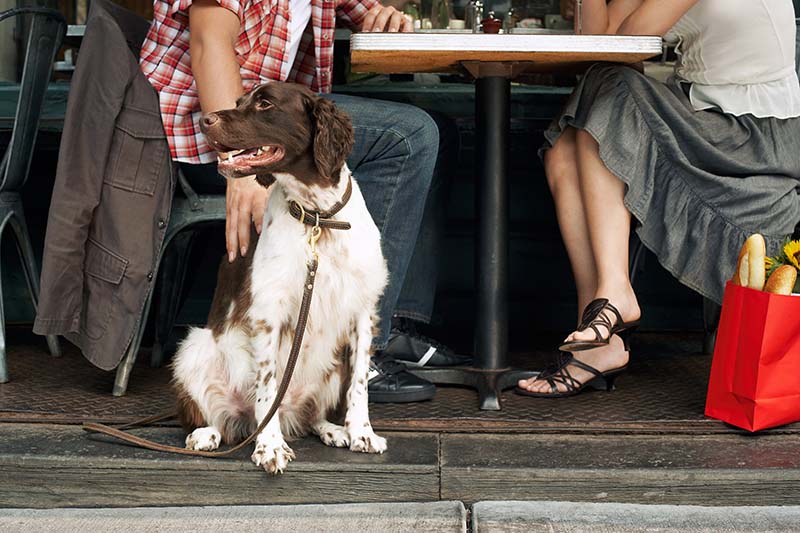10 Common Dachshund Health Issues: Symptoms, Treatment & Prevention

Updated on

Dachshunds are a popular breed of dog, and for good reason! They’re long bodies and adorable little legs could capture anyone’s heart – but they can be prone to certain health issues¹. In this blog post, we will discuss 15 of the most common health problems that dachshunds face. We will also provide tips on how to prevent and treat these health issues. If you own a dachshund, it is important to be aware of these health concerns so that you can take steps to protect your furry family member.
The 10 Common Dachshund Health Issues
1. Intervertebral Disk Disease
Intervertebral disk disease (IVDD) is a condition that can affect your dog’s spine. It happens when the disks that cushion the vertebrae in your dog’s spine start to degenerate. This can put pressure on the spinal cord and nerves, and cause pain, weakness, and even paralysis. IVDD is most common in small breeds¹ of dogs, like dachshunds, and usually affects dogs between the ages of 4 and 8. However, any dog can be affected by IVDD.
There are two types of IVDD: acute and chronic. Acute IVDD happens suddenly and is often the result of an injury. Chronic IVDD develops slowly over time and is usually the result of age-related degeneration. Regardless of the type, IVDD can be very serious and even life-threatening.
The most common symptom of IVDD is back pain. You may also notice your dog hesitating to jump, walking slowly or gingerly, or holding his head and neck stiffly. If the pressure on your dog’s spinal cord is severe enough, he may lose feeling in his legs or even become paralyzed.
If you suspect your dog has IVDD, it’s important to see your veterinarian right away. Your vet will likely recommend x-rays or an MRI to confirm the diagnosis. Treatment will depend on the severity of your dog’s condition and can range from rest to surgery. With prompt diagnosis and treatment, many dogs with IVDD can go on to live long, happy lives!
There is no surefire way to prevent IVDD, but there are some things you can do to reduce your dog’s risk. Keep your dachshund at a healthy weight¹, as obesity can put extra strain on the spine and worsen IVDD. Provide your dog with soft bedding to sleep on and avoid letting him jump from high places. If your dachshund is showing signs of back pain, make an appointment with your veterinarian right away.
2. Hip Dysplasia

Dachshunds are notorious for their health problems. One of the most common is hip dysplasia, which is a condition that causes the hip socket to deform. This can lead to pain, lameness, and even arthritis.
The symptoms of hip dysplasia can vary depending on the severity of the condition. Some dogs may show no signs at all while others may have severe pain and lameness.
Hip dysplasia is usually diagnosed through X-rays, and the best way to prevent it is to have your dog checked by a vet regularly, and to keep them at a healthy weight.
Treatment typically involves pain medication and joint supplements, but in severe cases, surgery may be necessary. If you think your dog may have hip dysplasia, be sure to see your vet right away.
The best way to prevent hip dysplasia is to have your dog checked by a vet regularly, and to keep them at a healthy weight.
You can also try giving your dog joint supplements, which may help to reduce the symptoms of hip dysplasia.
3. Bloat
Bloat is a potentially life-threatening condition that can affect dogs of any age, breed, or size. It occurs when the stomach fills with gas and becomes distended. In some cases, the stomach may also twist on itself, cutting off the blood supply. If left untreated, bloat can be fatal. There are several factors that may increase a dog’s risk of developing bloat, including overeating, drinking large amounts of water immediately after exercise, and anxiety.
Symptoms of bloat include restlessness, pacing, drooling, panting, and abdominal pain. If you suspect your dog is suffering from bloat, it is important to seek veterinary care immediately.
Dogs can tell right away if a dog has bloat, but some tests may be necessary to confirm. These could include x-rays, ultrasounds, or blood tests. Treatment will depend on the severity of your dog’s condition but may involve surgery to remove gas from the stomach or to untwist the stomach.
Treatment typically involves relieving the pressure on the stomach and correcting the Twist. In some cases, surgery may be necessary. With prompt treatment, recovery from bloat is usually successful. However, dogs who have experienced bloat are at risk for developing it again and should be monitored closely by their veterinarian.
There is no guaranteed way to prevent bloat, but there are some things you can do to reduce your dog’s risk. These include feeding smaller meals, avoiding strenuous exercise immediately after eating, and making sure your dog always has access to fresh water, so they don’t drink large amounts at once.
4. Dental Problems

Dental problems are one of the most common health issues in dogs, and dachshunds are no exception. Just like humans, dogs can suffer from tartar buildup, gum disease, and tooth decay. Poor dental hygiene can lead to pain and infection and can even cause other health problems such as heart disease.
The earliest sign of dental disease is usually bad breath. You may also notice your dog drooling, pawing at his face, or eating more slowly.
Your veterinarian will be able to diagnose dental problems through a physical examination and x-rays. Treatment will vary depending on the severity of the condition but may involve teeth cleaning, extractions, or antibiotics.
Keeping your dog’s teeth clean is one of the best ways to prevent dental problems. This can be done at home with regular brushing or with special chew toys and treats designed to promote dental health.
The best way to prevent dental problems is to brush your dog’s teeth regularly. You can also give them special chew toys and treats that help promote dental health.
5. Allergies
Allergies are one of the most common health problems in dogs. They can be caused by a variety of factors, including environmental allergens, food allergies, and reactions to certain medications.
Allergies can lead to a wide range of symptoms, including itchiness, sneezing, and runny eyes. In some cases, they can also cause more serious problems like skin infections and difficulty breathing. Diagnosing allergies can be tricky, as symptoms can vary depending on the trigger. However, your veterinarian will likely start with a physical exam and a review of your dog’s medical history. If allergies are suspected, your vet may recommend further testing, such as blood work or allergy skin tests. There is no cure for allergies, but there are several ways to manage them.
Treatment options may include changes to your dog’s diet, medications to relieve symptoms, and regular baths with a hypoallergenic shampoo. If your dog is showing signs of an allergic reaction, it’s important to see your vet right away. With proper treatment, most dogs with allergies can live long and happy lives.
There is no guaranteed way to prevent allergies, but you can help reduce your dog’s risk by avoiding known triggers and keeping them up to date on their vaccinations.
6. Skin Problems

Skin problems are one of the most common health issues in Dachshunds. They can be caused by a variety of factors, including allergies, parasites, and infections.
Symptoms of skin problems vary depending on the underlying cause but may include itchiness, redness, hair loss, and rashes. If you suspect your dog has a skin problem, it’s important to see your veterinarian for an accurate diagnosis.
Your vet will likely start with a physical exam and a review of your dog’s medical history. If skin problems are suspected, further testing may be necessary, such as skin scrapings or allergy tests. Treatment will depend on the underlying cause but may include topical medications, antibiotics, or changes to your dog’s diet.
There are several things you can do to help prevent skin problems in your dog. These include grooming regularly, using a hypoallergenic shampoo, and avoiding flea and tick products.
7. Ear Infections
Ear infections are one of the most common health problems in dogs. They can be caused by a variety of factors, including allergies, ear mites, and bacteria.
Symptoms of an ear infection may include itching, redness, discharge, and pain.
Your vet will likely start with a physical exam and a review of your dog’s medical history. If ear infections are suspected, further testing may be necessary, such as ear swabs or X-rays. Treatment will depend on the underlying cause but may include topical medications, antibiotics, or changes to your dog’s diet.
There are several things you can do to help prevent ear infections in your dog. These include grooming regularly, using a hypoallergenic shampoo, and avoiding flea and tick products.
8. Urinary Tract Infections

Urinary tract infections (UTIs) are one of the most common health problems in dogs. They can be caused by a variety of factors, including bacteria, allergies, and dehydration.
Symptoms of a UTI may include increased urination, difficulty urinating, and blood in the urine.
Your vet will likely start with a physical exam and a review of your dog’s medical history. If UTIs are suspected, further testing may be necessary, such as urine cultures or X-rays. Treatment will depend on the underlying cause but may include antibiotics or changes to your dog’s diet.
There are several things you can do to help prevent UTIs in your dog. These include providing plenty of fresh water, feeding a balanced diet, and avoiding foods that may irritate the urinary tract.
9. Cushing’s Disease
Cushing’s disease is one of the most common health problems in dogs. It can be caused by a variety of factors, including tumors, medications, and stress.
Symptoms of Cushing’s disease may include increased urination, increased thirst, hair loss, and weight gain. If you suspect your dog has Cushing’s disease, it’s important to see your veterinarian for an accurate diagnosis.
Your vet will likely start with a physical exam and a review of your dog’s medical history. If Cushing’s disease is suspected, further testing may be necessary, such as blood tests or urine cultures. Treatment will depend on the underlying cause but may include surgery or medication.
There are several things you can do to help prevent Cushing’s disease in your dog. These include reducing stress, maintaining a healthy weight, and avoiding certain medications.
10. Cancer

Cancer is one of the most common health problems in dogs. It can be caused by a variety of factors, including genetics, age, and environment.
Symptoms of cancer may vary depending on the type and location of the cancer. Common symptoms include weight loss, lethargy, and vomiting. If you suspect your dog has cancer, it’s important to see your veterinarian for an accurate diagnosis.
Your vet will likely start with a physical exam and a review of your dog’s medical history. If cancer is suspected, further testing may be necessary, such as biopsies or X-rays. Treatment will depend on the type and stage of the cancer but may include surgery, chemotherapy, or radiation therapy.
There are several things you can do to help prevent cancer in your dog. These include maintaining a healthy weight, avoiding certain medications, and reducing exposure to toxins.
Conclusion
Dachshunds are prone to a number of health problems. It is important to be aware of these conditions and to take your dachshund to the vet if you notice any changes in their health. Early detection and treatment of these conditions can help improve your Dachshund’s quality of life.
- See also: 7 Best Dog Harnesses for Dachshunds
Featured Image Credit: llaszlo, Shutterstock











